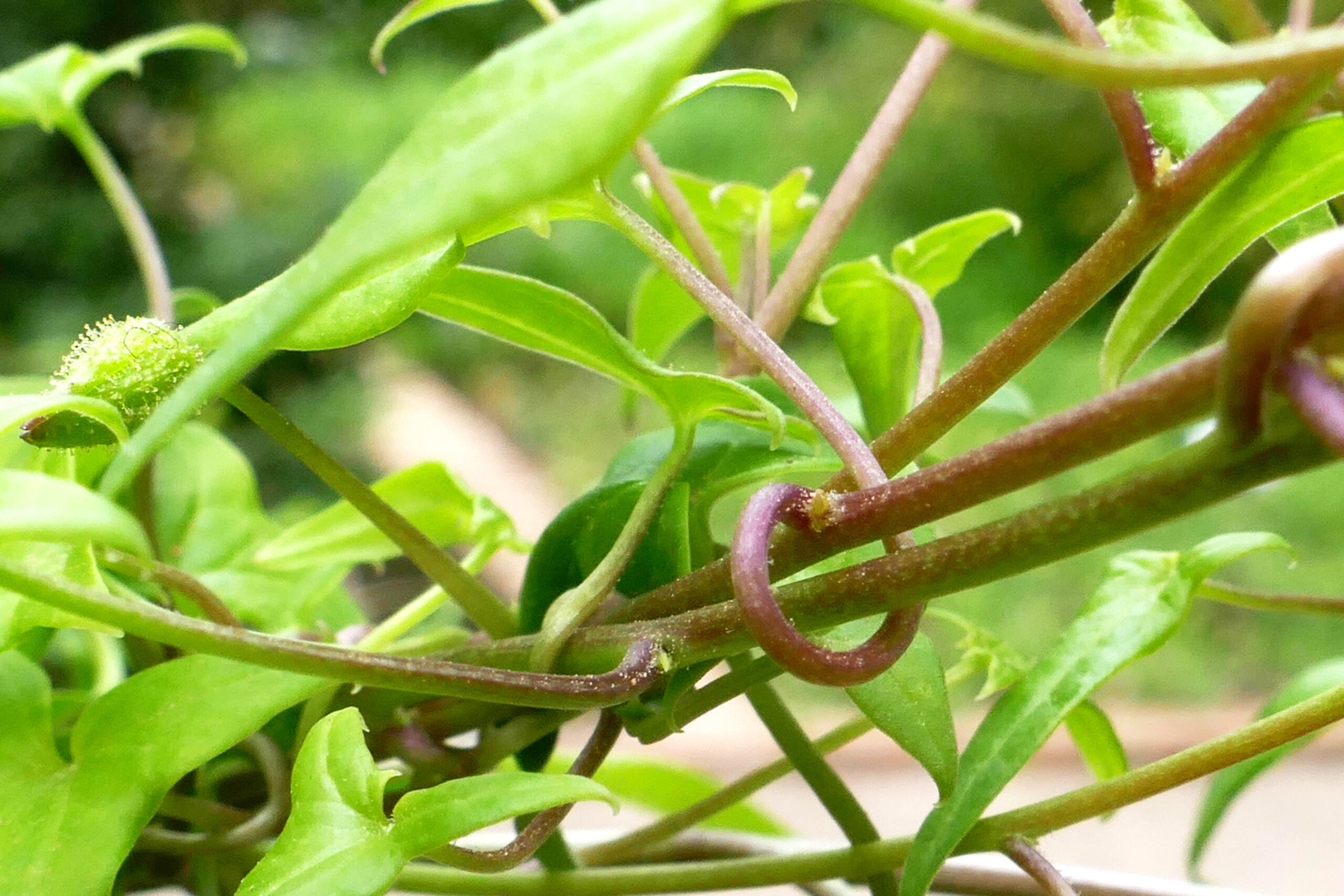Humboldt: the collections that never arrived… in Spain.
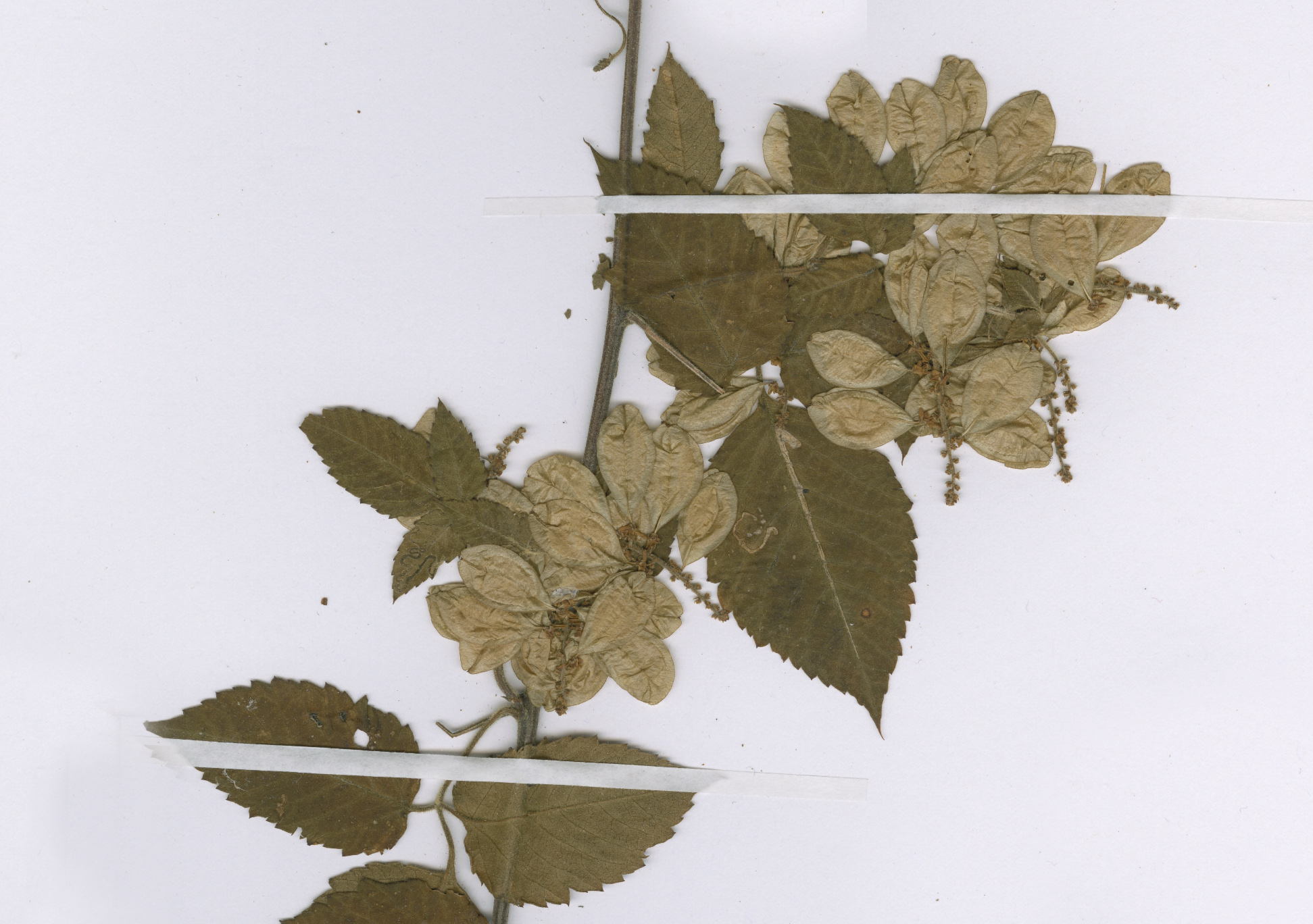
The artist Nuria Rodríguez wonders what is the reason for collecting every mountain, every island, every stone, every plant, every word, everything, again and again? I would answer that it is the only way to remember, to compare, to measure and, therefore, to learn.
Scientific collections are the main result and testimony of the scientific exploration of natural resources. Natural history museums and research centres dedicated to botany, zoology and geology around the world preserve millions of specimens resulting from the work of travellers, collectors and scientists throughout history. Even today, the evidence of the description of new species or morphological, molecular or chorological work with them is referred to a sample, a specimen kept in a scientific collection. Thanks to them, sciences such as taxonomy, systematics, biogeography or phylogeny can be contrasted and follow the scientific method.
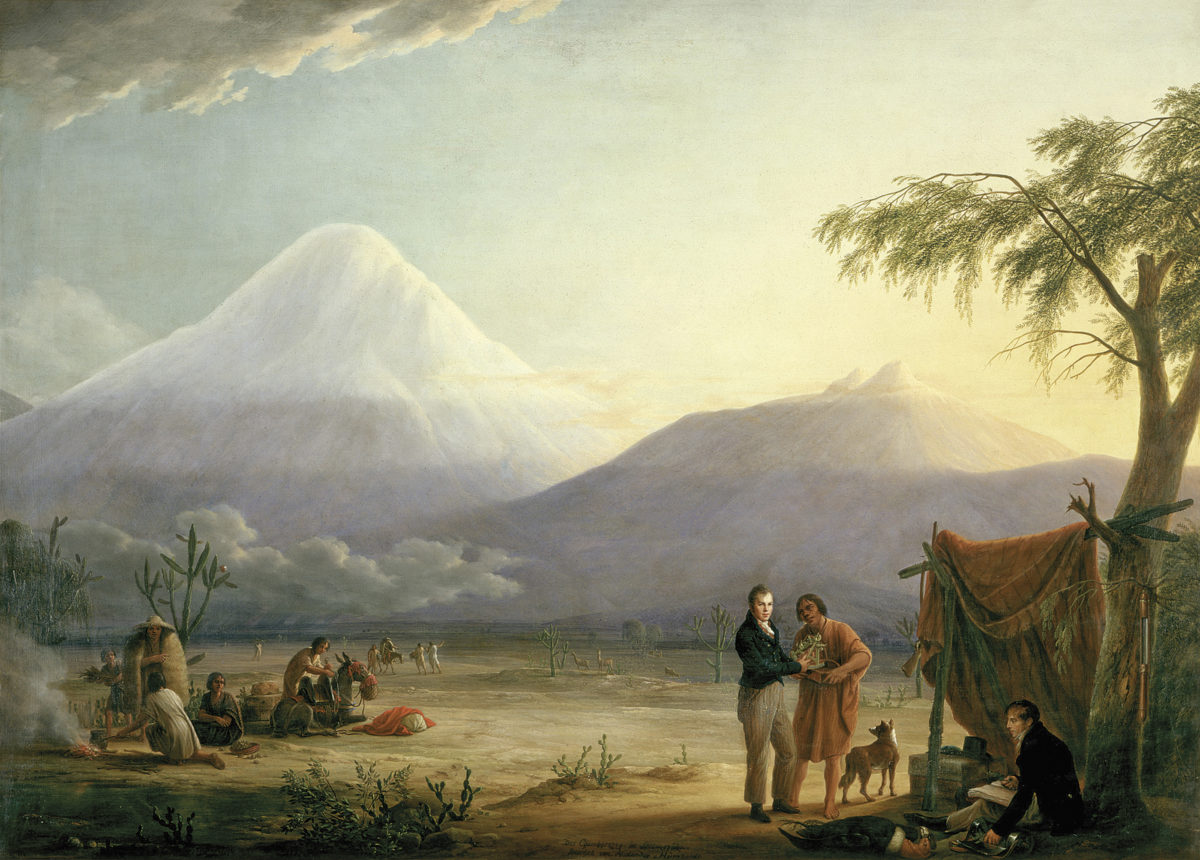
Members of an expedition sometimes take great care to ensure that their samples are not seen by other scientists before they study them. This may bolster their egos but it does not contribute to the growth of knowledge or the advancement of science. Great botanists such as Carl von Linné (1707-1778), Antonio José Cavanilles (1745-1804) or Carl Sigismund Kunth (1788-1850), which will be mentioned again at the end of the text, worked, studied and described plants collected by other botanists in remote places. None of them left their study offices, they did not travel around the world, but they were able to discover the characteristics that made plants different.
Alexander von Humboldt’s journey through Spain and his subsequent equinoctial adventure in the late 18th and the early 19th mixed adventure and chance, probably like many of the journeys undertaken by European scientists of that time to visit the edges of the continent, located nowhere else but on the Iberian Peninsula.
However, despite his initial botanical training, Alexander von Humboldt (1769-1859) showed more interest in astronomy, meteorology, mineralogy, geology and geography. This made him more of an ecologist than a botanist and more biogeographer than taxonomist. If he had devoted himself to the comprehensive study of the plants that appeared across his path and had wanted to transcend with them by giving them a name for science, perhaps he would not have gone down in history.
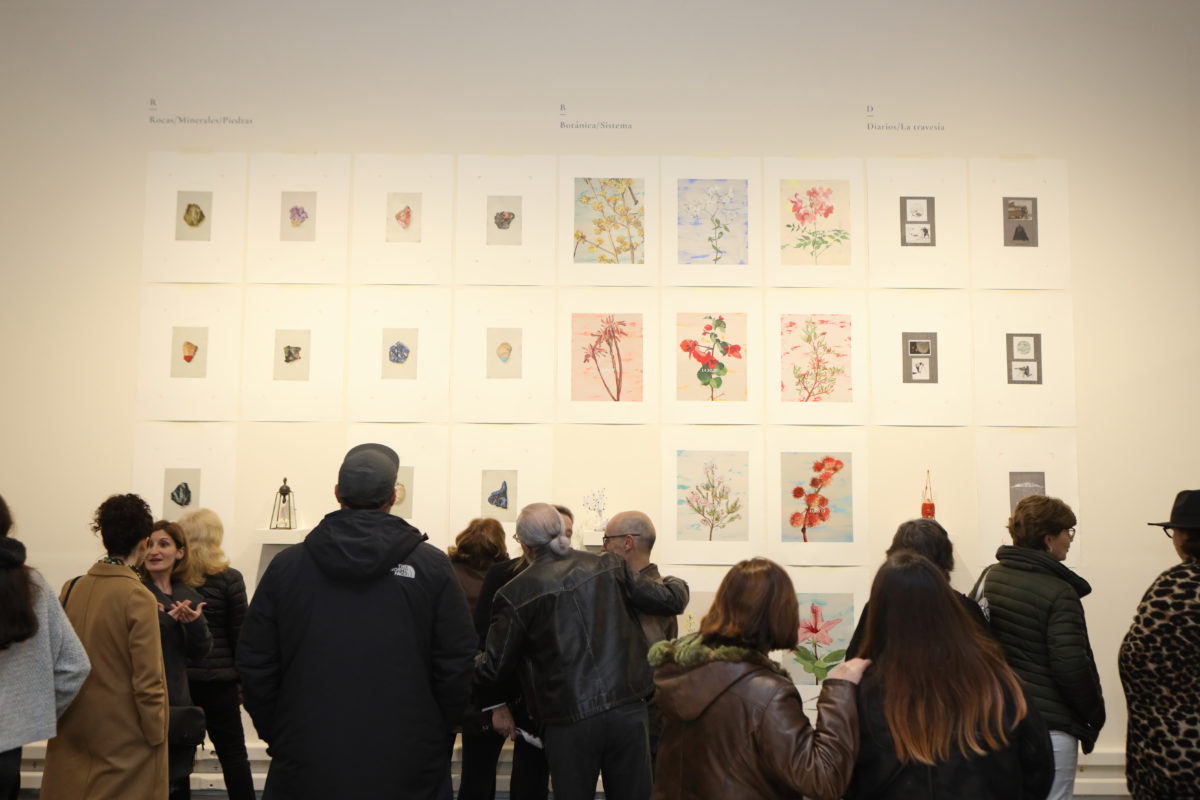
Nuria Rodríguez asked me to write a text about the botanical contribution of Humboldt to add to the catalogue of her exhibition “Pintar y medir”. To my surprise, little has been studied about this part of his monumental work and his long journey through America. Aedo (2018) provided me with the first clue, which helped us to delve into the botanical collections of Humboldt’s American journey and look for explanations for his absence in Spanish institutions. But there are probably still many Humboldtian documents to be analysed, where perhaps arguments that explain or correct the point of view we are now presenting could be found.
Humboldt and the passport of Charles I of Spain
Not yet thirty years old, Alexander von Humboldt arrived in Spain on the 3rd of January 1799, with the French naturalist, doctor and botanist Aimé Bonpland (1773-1858), who was considered a friend, companion, assistant or secretary of the Prussian nobleman. Both came with the idea of getting to Morocco safely to travel through the Atlas Mountains, after their attempts to go with Captain Baudin on his journey around the world and to travel to Algeria to reach Cairo and Mecca had failed (Puig-Samper & Rebok, 2007). In the end, they did not get to Africa coast either, but after a brief trip to the Iberian Peninsula, they set out on a journey through America, which fulfilled Humboldt’s dream of “undertaking a great expedition for the study of natural history”. Perhaps he wanted to broaden the view of the world he had forged in the Tegel forests outside Berlin, where as a child he began to collect stones, plants, butterflies and spent long hours contemplating nature (Wulf, 2016).
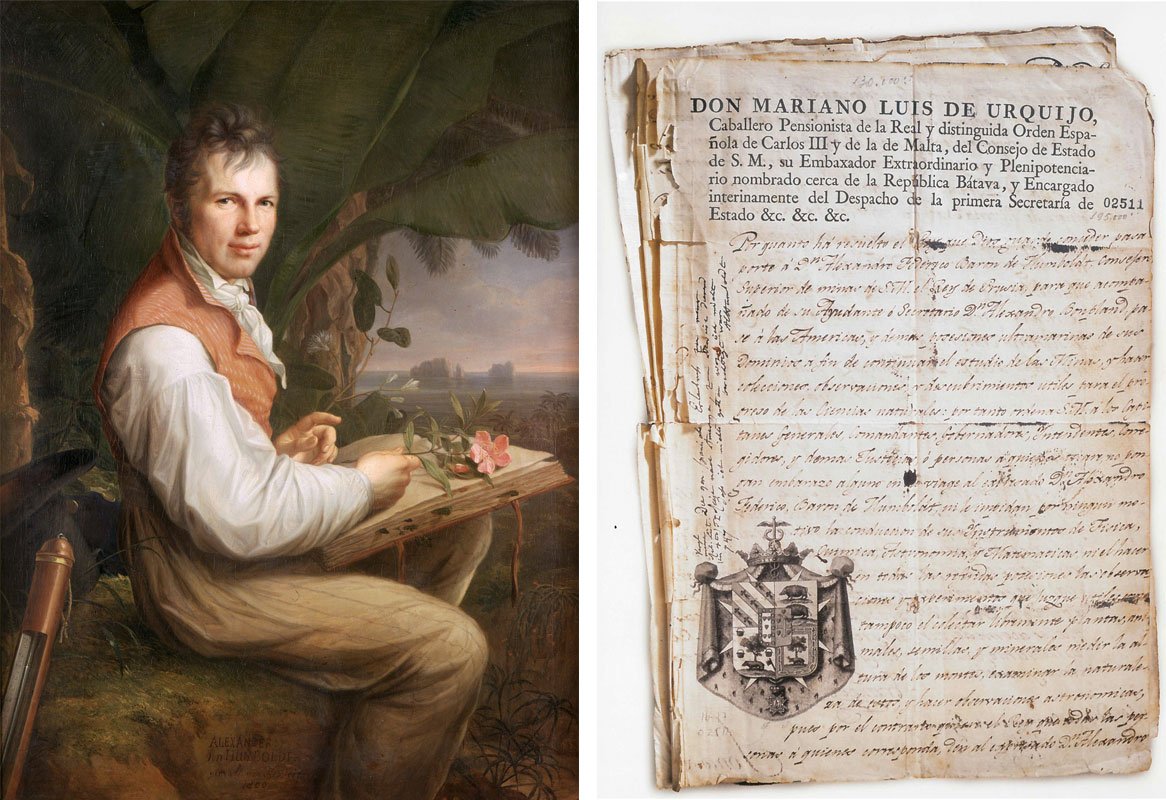
At the beginning of March, after his Spanish journey and his arrival in Madrid on the 23rd of February 1799, Alexander von Humboldt managed to gain access to the Court of Charles IV in Aranjuez (Spain) and to visit the king himself, to whom he presented his credentials and explained his intentions. This presentation was fundamental for the new orientation of the Spanish Crown’s travel plans towards the American territories. It was Mariano Luis de Urquijo, Secretary of State, who responded to the request of Philippe von Forell, Saxons’ ambassador (Rebok, 2009).
Humboldt, accredited for his botanical works and his appointment as High Councillor of Mines by the King of Prussia, presented his merits, his projects and his idea of making a journey that could be useful for the knowledge of science and the natural resources of the American territories under Spanish rule. The king’s ministers paid special attention to obtaining mineral resources, but they did not disdain other natural resources, particularly plants, as they authorised and provided everything needed for the task that Humboldt was about to begin. However, the British Crown refused him a similar passport for his planned expedition to India. On the 7th of May 1799, the Secretary of State signed the final passport which opened the doors to the New World for Humboldt and Bondpland (Rebok, 2009). Although the passport content was extremely generous to the Prussian and his desire for exploration, it did establish some conditions and commitments with the Crown. The one that interests us the most refers to how samples collected during field campaigns were to be sent to the Spanish institutions:
“It has been resolved by the King… to issue a passport to Mr Alexander von Humboldt, … and his assistant or secretary Mr Aimé Bondpland, so that they get to the Americas, … in order to continue the study of the mines and make collections, observations and discoveries that may be useful for the progress of natural sciences. Wherefore HM orders… not to put any hindrance in his journey, nor prevent him from freely collecting plants, animals, seeds and minerals…, furthermore HM commands to everyone that they receive and embark… upon the Real Gabinete de Historia Natural… every box that contains natural objects delivered to them by Mr Alexander von Humboldt, responsible for collecting those productions to enrich the Real Gabinete de Historia natural and the Jardines Reales…”
Translation of the passport transcription in Rebok (Rebok, 2009: 138).
Humboldt, together with Aimé Bonpland, left the Iberian Peninsula and headed to America on the 5th of June 1799, from the Port of A Coruña. In his suitcase he carried the royal passport which not only did it make him easier to go through the American territories, but also allowed him to travel and stay at the expense of the Spanish Crown, and have guidance and support by the local authorities. Humboldt was thus provided financial support. The expedition would not return to Spain, as they went back to Europe on the 3rd of August 1804 via the port of Bordeaux. Five years travelling through America that left no samples in Spanish herbaria.

Geranium humboldtii Spreng. Humboldt and Bonpland took this plant, perhaps on the Chimborazo, but they never described it for scientific purposes. Curt P. J. Sprengel (1766-1833) found the sheets in the Berlin herbarium and dedicated the species to the Prussian scientist / Carlos Aedo, Real Jardín Botánico, CSIC.
It is true that the Crown was neither scientifically nor financially responsible for this expedition. It is true that Humboldt bore all the expenses and also the subsequent costs of the publication of his studies. But it is also true that without that passport, he would not have been able to travel, study, inventory, measure, describe or discover the American territories, nor would he have been able to become one of the most notable scientists of the 19th century and of the history of Natural Sciences.
The only known letter sent by Humboldt to Cavanilles was published by the latter, on the 22nd of April 1803 from Mexico City, in the Anales de Ciencias Naturales (6: 281-287, 1803). In it, he begins by referring to the letters he had previously sent and for which he had received no reply. This complaint is very present in Humboldt’s correspondence with Spanish scientists and politicians or accredited people, and he makes regular reference to sending minerals to the Real Gabinete de Historia Natural but only occasionally seeds for the Real Jardín Botánico (cf. Rebok, 2009).
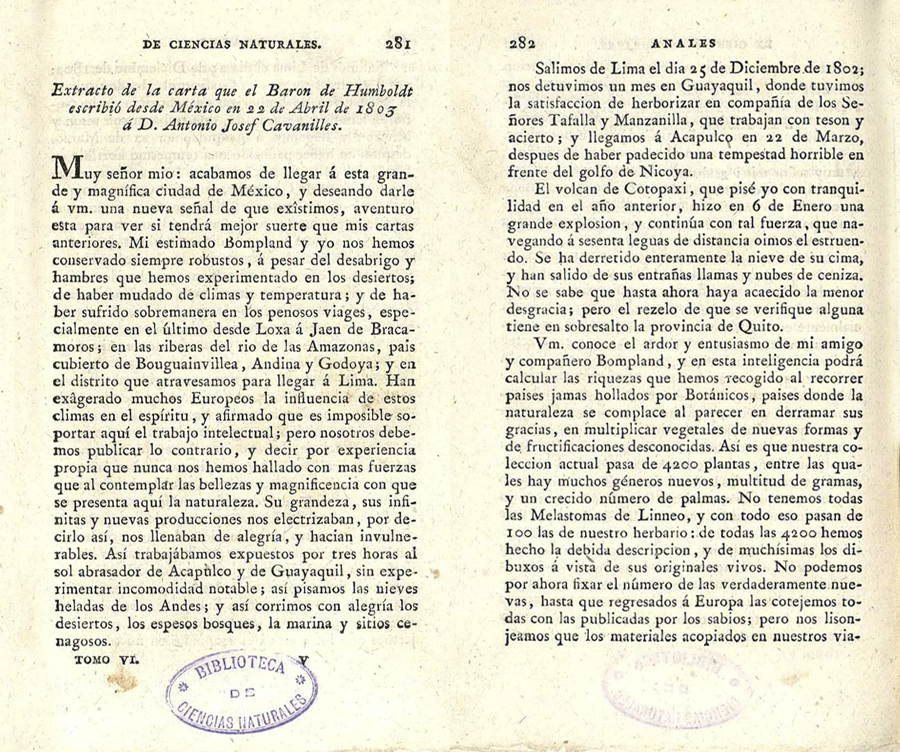
Extract from the letter that Alexander von Humboldt sent to Antoni Josep Cavanilles on the 22nd of April 1803.
The letter recounts the journey, at least since leaving Lima on the 25th of December 1802, and makes references to the journey along the banks of the Amazon or the snow in The Andes, passing through Acapulco, Guayaquil or Loxa. It does not appear to be a continuation of a previous one, nor does it seem to contain references to possible questions that needed an answer and had been lost in unanswered missives.
There is detailed botanical information, in which he recounts the collections carried out with his “friend and companion” Aimé Bonpland. He also make references to genus and species collected, to drawings made from the natural environment and to descriptions of new taxa, which would have to be compared with the publications of the “wise men”, once they returned to Europe. He specifies that his collection consisted of “more than 4,200 plants”, of which he has drawn up descriptions. He refers to palms, melastomataceae and grasses, but not to the fact that he had sent any of them or planned to do so. On the contrary, Humboldt makes it clear that “We have destined some specimens for YM, which we will take with us on our return”.
Cavanilles immediately wrote to Pedro Cevallos, then Secretary of State of Charles IV, asking him to provide him with “the seeds, plant skeletons and letters” that Humboldt could have sent to the Real Gabinete de Historia Natural. The Secretary of State forwarded the request, which was answered by Eugenio Izquierdo, director of the Real Gabinete, informing that Humboldt had only sent “volcanic material” to the Real Gabinete (Gónzález Bueno, 2002).
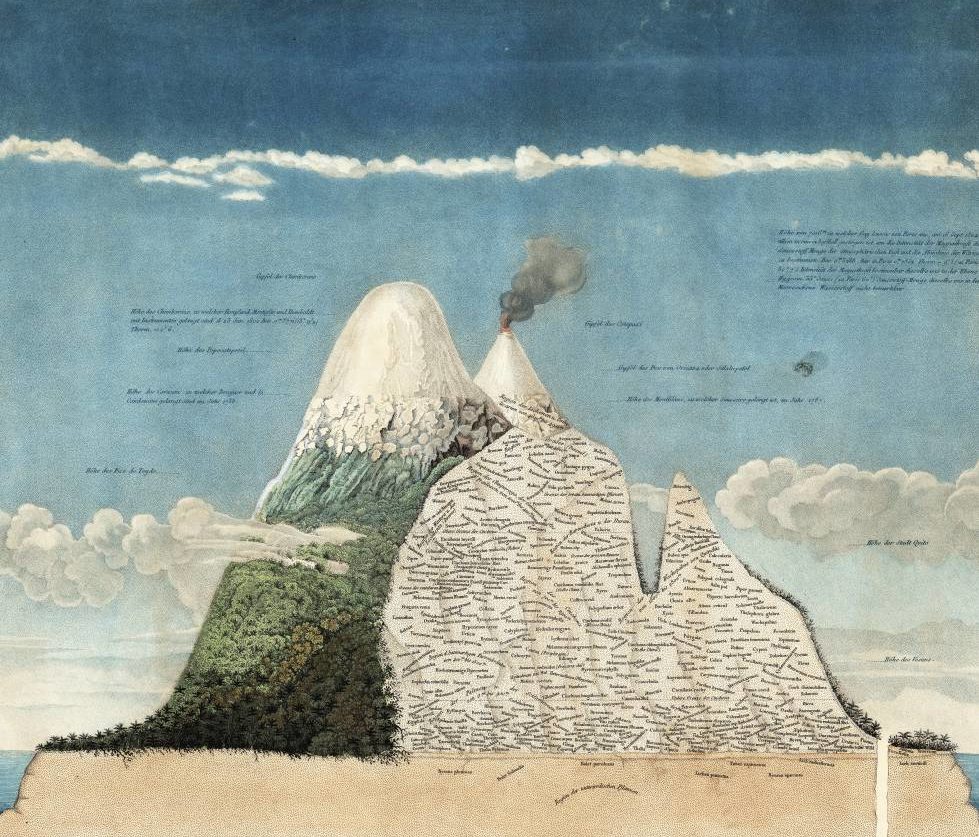
At the foot of the Andes, Humboldt took notes so that he could draw later in Europe his ‘Naturgemälde’: a representation of the cross section of Chimborazo, on which he noted the different plant species distributed according to altitude. / Wikimedia
The truth is that no sample of the dried plants that Humboldt and Bonpland collected during their journey through America reached any Spanish institutions, and only one batch of seeds, sown in 1801, is known to have been sent to the Real Jardín Botánico. However, the Prussian and the Frenchman did leave evidence of their collections in the herbaria of the Muséum National d’Histoire Naturelle in France, and the Botanischer Garten und Botanisches Museum Berlin-Dahlem, Zentraleinrichtung der Freien Universität Berlin, in Germany. There are 5,586 sheets in Paris and 3,306 in Berlin, probably duplicated of the main collection. This number of sheets could be in line with the number that Humboldt stated in his 1803 letter to Cavanilles, bearing in mind that they remained in America for almost two more years. Cinchona officinalis
How can the absence of Humboldtian collections in Spanish botanical institutions be justified? One might wonder whether Humboldt’s plants and letters could have been lost in a shipwreck, although there is no evidence. Another possibility is that Cavanilles and the other addressees of Humboldt’s correspondence might have got rid of them, something unlikely in the case of the Valencian botanist who, as González Bueno (2002) explains, kept even the smallest expense note.
This led us to consider that Humboldt may have thought that his commitments with Charles IV were limited to sending mineral samples to the Real Gabinete de Historia Natural, which he did, and that he had more freedom with plants. As he explained to Cavanilles in his letter from Mexico City, this allowed him to send “to the Institut de France”, without the authorisation of the Crown, “a curious collection of . Cinchona officinalis from New Granada, consisting of well-chosen barks, beautiful flowers and fruits, and magnificent illuminated drawings in large sheets of paper”, a gift from José Celestino Mutis (1732-1808). Perhaps he may have been aware, through Casimiro Gómez Ortega, of the disputes between Cavanilles and the American members of expeditions, especially with Hipólito Ruiz (1754-1816) over the abbé’s handling and study of the plants sent from America to the Real Jardín Botánico, drawing, describing and publishing everything he considered new to science without taking into account the collectors. He even said about them: “being a traveller is not the same as being a botanist, nor seeing plants is the same as being a competent judge to determine fructification, genus and species. Someone who takes plants and seeds and sends them without prior examination is not an author” (Quintanilla, 1999).

Viola cheiranthifolia Bonpl.,endemic species of the summit of Mount Teide described by Aimé Bonpland from the material collected with Humboldt during his stay on the Tenerife Island in 1799. Voyage de Humboldt et Bonpland. Sixième partie, Botanique. Plantes Équinoxiales, table 32, (1807) / Biblioteca Digital del Real Jardín Botánico, CSIC.
Antonio José Cavanilles died on the 5th of May 1804 without seeing in the Real Jardín Botánico the Humboldt collections that never arrived. Humboldt and Bonpland returned to Europe shortly afterwards, via France, and settled in Paris where they wrote and published the results of their journey. Bonpland studied plants and described just 175 new taxa (genus and species) in over twelve years. All were published, between 1805 and 1817, in successive instalments of his joint work Plantes Équinoxiales, published in 17 instalments in 2 volumes, where the entire contribution to the systematics of plants is due to Aimé Bonpland.
Humboldt was despaired about the slow progress of the study of American plants and sought out Carl Sigismund Kunth (1788-1850) to study them. Kunth, a well-organised and systematic botanist, a disciple, like Humboldt himself, of Carl Ludwig Willdenow (1765-1812), was able to systematically study the sheets and drawings. He published between 1816 and 1825, in Paris, the seven volumes of Nova Genera et Species Plantarum Quas in Peregrinatione ad Plagam Aequinoctialem Orbis Novi Collegerunt Bonpland et Humboldt in which 3,472 new taxa were described, the main botanical contribution of Humboldt and Bonpland’s expedition to the equinoctial regions between 1799 and 1804.
The Prussian scientific finally understood what Cavanilles was trying to explain to Gómez Ortega. Moreover, thanks to the systematic work of Kunth, who had not taken part in the American expedition, he managed to bring to light many new species that would otherwise be waiting their time on the shelves of the Paris herbarium or in the natural spaces that Alexander von Humboldt and his friend Aimé Bonpland travelled through.
Note: A slightly shorter version of this text was published in the catalogue of the exhibition “Sistema Humboldt. Pensar/Pintar”, by Nuria Rodríguez, which opened at the Centre Cultural La Nau of the Universitat de València on the 20th of February 2020.
Bibliografia
Aedo, C. 2018, El pasaporte de Humboldt a América, Quercus 391: 12-15.
González Bueno, A. 2002, Antonio José Cavanilles (1745-1804). La pasión por la Ciencia, Ediciones Doce Calles, Madrid.
Puig-Samper, M. A. i Rebok, S. 2007, Sentir y medir. Alexander von Humboldt en España, Ediciones Doce Calles, Madrid.
Quintanilla, J. F. 1999, Naturalistas para una Corte Ilustrada, Ediciones Doce Calles, Madrid.
Rebok, S. 2009, Una doble mirada. Alexander von Humboldt y España en el siglo XIX, CSIC, Madrid.
Wulf, A. 2016, La invención de la naturaleza: El Nuevo Mundo de Alexander von Humboldt, Taurus ediciones, Barcelona.







